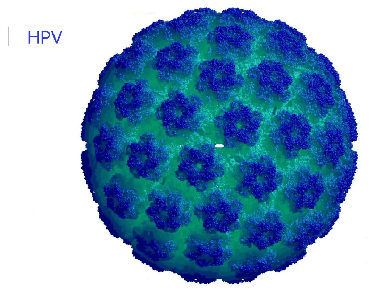When it comes to HPV, it’s usually associated with cervical cancer in women. However, according to incomplete statistics, the likelihood of HPV infection is 84.6% in sexually active women and 91.3% in men, especially high among men who have sex with men.
HPV, known as Human Papillomavirus, prefers the epithelial tissue cells of specific areas in the human body such as the cervix, vagina, vulva, penis, perianal region, and oral mucosa. As long as there are minor cuts on the skin/mucosa, HPV can take hold.
The prevalence of HPV is usually categorized by type (high-risk, low-risk), HIV infection status (HIV-positive, HIV-negative), and infection sites (anal, genital, oral pharynx, etc.).
HPV, both high-risk and low-risk types, are part of a large family with over 200 subtypes, divided into high-risk and low-risk based on their carcinogenic potential.
Infection with low-risk HPV types 6 and 11 can lead to genital warts, mostly benign growths that may appear on hands, feet, face, and genitals. From ordinary bumps to pointed warts, they can cause psychological stress, affect sexual life, and may even undergo malignant transformation.
Moreover, HPV infection can reduce sperm quality and affect fertility, such as decreased sperm motility, altered sperm morphology, increased occurrence of abnormal sperm, possibly leading to infertility.
High-risk HPV types (commonly HPV16 and HPV18) are closely related to cancers such as penile cancer, anal cancer, genital cancer, tonsil cancer, throat cancer, and cervical cancer.
Risk of HPV infection in men:
Prevalence: A study in The Lancet Global Health revealed that nearly 1/3 of men globally are infected with at least one type of genital HPV, with about 1/5 of men infected with one or more high-risk HPV types. The top three HPV types most easily contracted by men are: type 16 (5%), type 6 (4%), and type 51 (3%).
Sites: A meta-analysis published in The Lancet showed that in European males ≥15 years old, the prevalence of HPV infection in the anal, penile, oral, and urethral areas reaches 78.4%, 36.2%, 17.3%, and 15.4%, respectively.
Age: Another study indicated that sexually active men are more susceptible to infection:
· Adolescents aged 15-19 have an infection rate of 28%.
· Peak infection rate is up to 35% in those aged 25-29.
· A relatively high infection rate is maintained before the age of 50.
China: Data from literature reports show that the HPV infection rate in heterosexual Chinese men at the anogenital sites is 14.5%, while among men who have sex with men, the rate is as high as 59.9%, with a detection rate of 87.5% in HIV-positive men who have sex with men.
High-risk of HPV among men who have sex with men:
A meta-analysis on the factors influencing anal HPV infection in Chinese men who have sex with men, analyzing 20 related articles published between 2010 and 2022, revealed an HPV infection rate ranging from 40%-60% in the MSM community, with Beijing having the highest rate at 71.4%.
In the MSM population, whether 1 or 0, is susceptible to HPV, just with slight variations in the location.
Results from an analysis of oral HPV infection among the global MSM community published in 2016 indicated that HIV infection is a key factor:
In HIV-negative individuals
In HIV-positive individuals
Type 16 HPV
3.0%
4.7%
High-risk HPV
9.1%
16.5%
Any type of HPV
17.1%
28.9%
Similarly, HIV infection is a risk factor for anal HPV infection in MSM.
Why does HIV increase the risk of HPV infection?
1) Cells infected with HIV release proteins called tat and gp120, which assist in HPV colonization and persistence at a cellular and molecular level.
2) The protein tat significantly enhances HPV transcription and the expression of HPV E oncogenes and L capsid proteins during the HPV replication stage. In the AIDS stage, it can lead to persistent HPV infection.
3) HIV induces immune suppression, increasing the risk of HPV infection and the likelihood of persistent and latent HPV reactivation, resulting in higher HPV viral loads, more subtypes, lower clearance rates, and broader HPV persistence in HIV-infected individuals.
4) Both viruses can be transmitted through sexual activity, with HIV increasing the chances of new HPV infections. Conversely, HPV infection can also facilitate HIV infection and progression.
Note: Age, smoking, and the number of sexual partners can also affect the likelihood of HPV infection.
Red Maple Bay reminds: HPV infection in men usually doesn’t present obvious symptoms but can lead to health issues. Many individuals only discover their HPV infection after developing genital warts like condylomata acuminata, but the absence of warts doesn’t guarantee the absence of HPV; it’s essential to get tested.


